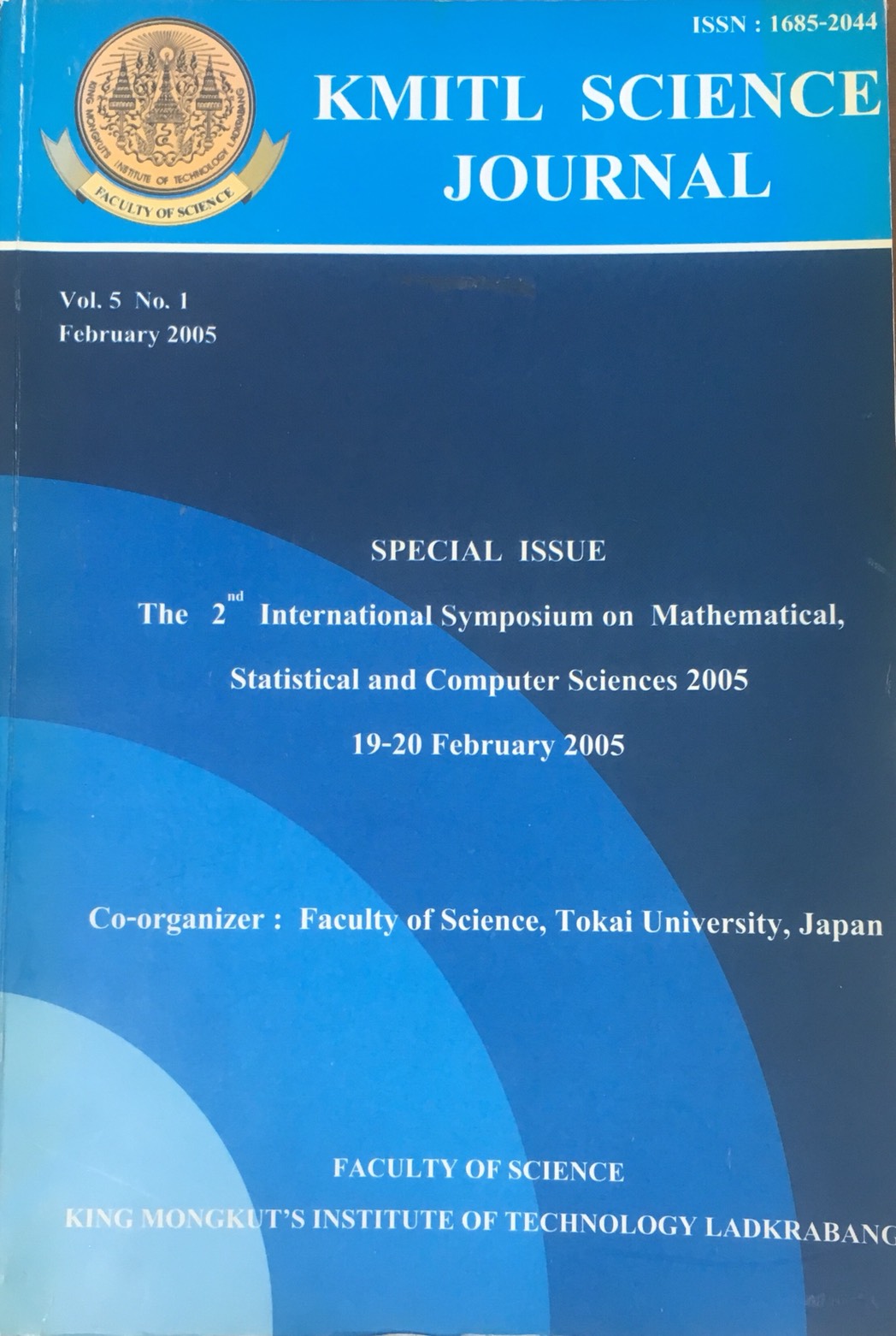Canonical Health Model for Thailand: Rural Health 1993
Main Article Content
Abstract
At least two changes are needed to achieve the campaigns of Health For All as it was urged by the World Health Organization 1987: healthy environment and healthy lifestyles. In this paper, secondary data of rural provinces in Thailand were collected in the year 1993. The purpose was to investigate territorial health situation before the big economic crisis by use of canonical health model. Health, as a part of level of living components, was considered and represented by 5 subsets and 8 sub-subsets of health needs. Based on 26 admissible health and health-related phenomena, 14 admissible indicators were available. They consist of 5 input (predictor) indicators and 9 output (outcome) indicators. Selection of indicators was done, both for the input and output sets. Testing hypothesis, redundancy analysis and interpretation of coefficients were also examined. Result revealed finally a single canonical health model that existed to explain the rural health of Thailand.
Keywords: input and output sets, canonical equations, canonical correlations, canonical loadings, canonical cross-loadings, redundancy analysis
Corresponding author: E-mail: krnahath@kmitl.ac.th
Article Details
Copyright Transfer Statement
The copyright of this article is transferred to Current Applied Science and Technology journal with effect if and when the article is accepted for publication. The copyright transfer covers the exclusive right to reproduce and distribute the article, including reprints, translations, photographic reproductions, electronic form (offline, online) or any other reproductions of similar nature.
The author warrants that this contribution is original and that he/she has full power to make this grant. The author signs for and accepts responsibility for releasing this material on behalf of any and all co-authors.
Here is the link for download: Copyright transfer form.pdf
References
[2] Hair, J.F. and others (1995) : Multivariate Data Analysis with Readings, Fourth Edition,Prentice Hall, U.S.A., pp. 345-352
[3] Hawkes, G.R. et al. (1980) : Quality of Life: Perspectives and Review, Special Report 86, North Central Regional Research Publication, Iowa, pp. 8-10
[4] Hopkins, C.E (1969) : Statistical Analysis by Canonical Correlation : A Computer Application, Health Services Research, Vol.4 (Winter)
[5] Hotelling, H. (1936) : Relation between two sets of variables, Biometrika, Vol.28, pp.321-77
[6] Horn, R.V. (1978) : Assessment of Living Levels- the Social Indicator Approach, International Journal of Social Economics, Vol.5, No.3
[7] Horn, R.V. (1993) : Statistical Indicators for the Economic & Social Sciences, Cambridge University Press, Hong Kong, pp.1-82.
[8] Maslow, A.H. (1970) : Motivation and Personality, second edition, Harper & Row, New York
[9] Manly, B.F.J. (1986) : Multivariate Statistical Methods : A Primer, Chapman and Hall, New York, pp. 1-150.
[10] Manly, B.F.J. (1994) : Multivariate Statistical Methods : A Primer, Chapman and Hall, second edition, India, pp. 1-175.
[11] Meredith, W. (1964) : Canonical Correlation with Fallible Data, Psychometrika, Vol.29
[12] Muller, K.E. (1981) : Relationships between Redundancy Analysis, Canonical Correlation, and Multivariate Regression, Psychometrika, Vol.46
[13] Rencher, A.C. (1995) : Methods of Multivariate Analysis, John Wiley & Sons Inc, U.S.A.
[14] Rooy, J.D. (1978): A Canonical Quality of Life Model, American Journal of Economics and Sociology, Vol.37 No.4
[15] Saenchaleon, P. (1996a) : Study of Research and Development of Thailand 1993: Medical and Public Health Aspect, MOPH, Bangkok, pp. 56-89.
[16] Saenchaleon, P. (1996b) : The Utilization of Medical and Health services by Thai People, Research Council, Bangkok, pp. 1-45.
[17] Shenouda, S. (1977) : Welfare and Economic Development, Ph.D disseratation, SGPiS, Warsaw
[18] Panek, T. (1989) : On the Measurement of the Level of Living, Metron, Vol.XLVII, No.1/4
[19] Panek, T. (1990) : The Statistical Measurement of the Level of Living : Case Study of Poland, Economic Notes, Vol.19, No.2
[20] Poleszynski, D. (1981) : On Indicators for Health. In. Indicators of Development : Early Identification of Imminent Dangers in Social Life, Conference held by the United Nations University, UNESCO and Committee Poland “2000”, Warsaw


